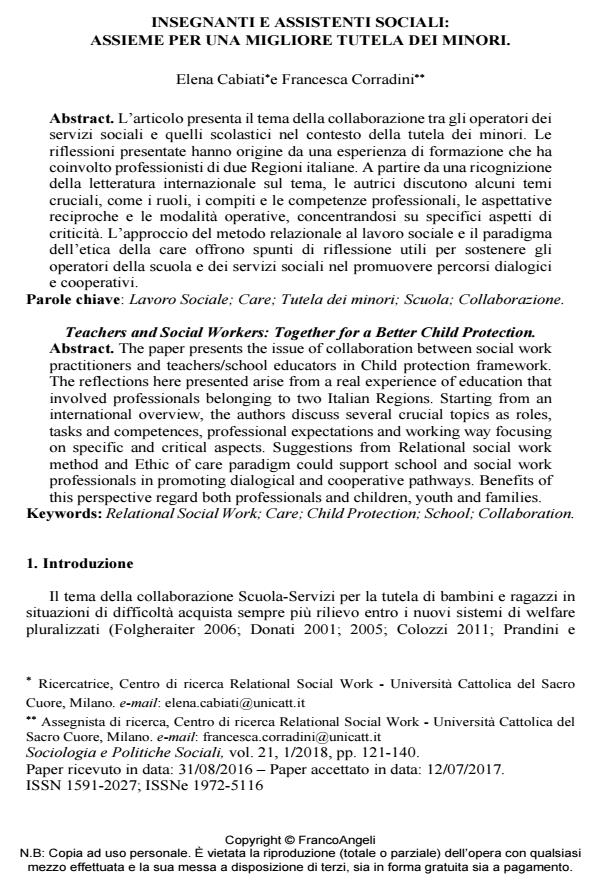Insegnanti e assistenti sociali: assieme per una migliore tutela dei minori.
Titolo Rivista SOCIOLOGIA E POLITICHE SOCIALI
Autori/Curatori Elena Cabiati, Francesca Corradini
Anno di pubblicazione 2018 Fascicolo 2018/1
Lingua Italiano Numero pagine 20 P. 121-140 Dimensione file 265 KB
DOI 10.3280/SP2018-001008
Il DOI è il codice a barre della proprietà intellettuale: per saperne di più
clicca qui
Qui sotto puoi vedere in anteprima la prima pagina di questo articolo.
Se questo articolo ti interessa, lo puoi acquistare (e scaricare in formato pdf) seguendo le facili indicazioni per acquistare il download credit. Acquista Download Credits per scaricare questo Articolo in formato PDF

FrancoAngeli è membro della Publishers International Linking Association, Inc (PILA)associazione indipendente e non profit per facilitare (attraverso i servizi tecnologici implementati da CrossRef.org) l’accesso degli studiosi ai contenuti digitali nelle pubblicazioni professionali e scientifiche
L’articolo presenta il tema della collaborazione tra gli operatori dei servizi sociali e quelli scolastici nel contesto della tutela dei minori. Le riflessioni presentate hanno origine da una esperienza di formazione che ha coinvolto professionisti di due Regioni italiane. A partire da una ricognizione della letteratura internazionale sul tema, le autrici discutono alcuni temi cruciali, come i ruoli, i compiti e le competenze professionali, le aspettative reciproche e le modalità operative, concentrandosi su specifici aspetti di criticità. L’approccio del metodo relazionale al lavoro sociale e il paradigma dell’etica della care offrono spunti di riflessione utili per sostenere gli operatori della scuola e dei servizi sociali nel promuovere percorsi dialogici e cooperativi.
Parole chiave:Lavoro Sociale; Care; Tutela dei minori; Scuola; Collaborazione
Elena Cabiati, Francesca Corradini, Insegnanti e assistenti sociali: assieme per una migliore tutela dei minori. in "SOCIOLOGIA E POLITICHE SOCIALI" 1/2018, pp 121-140, DOI: 10.3280/SP2018-001008